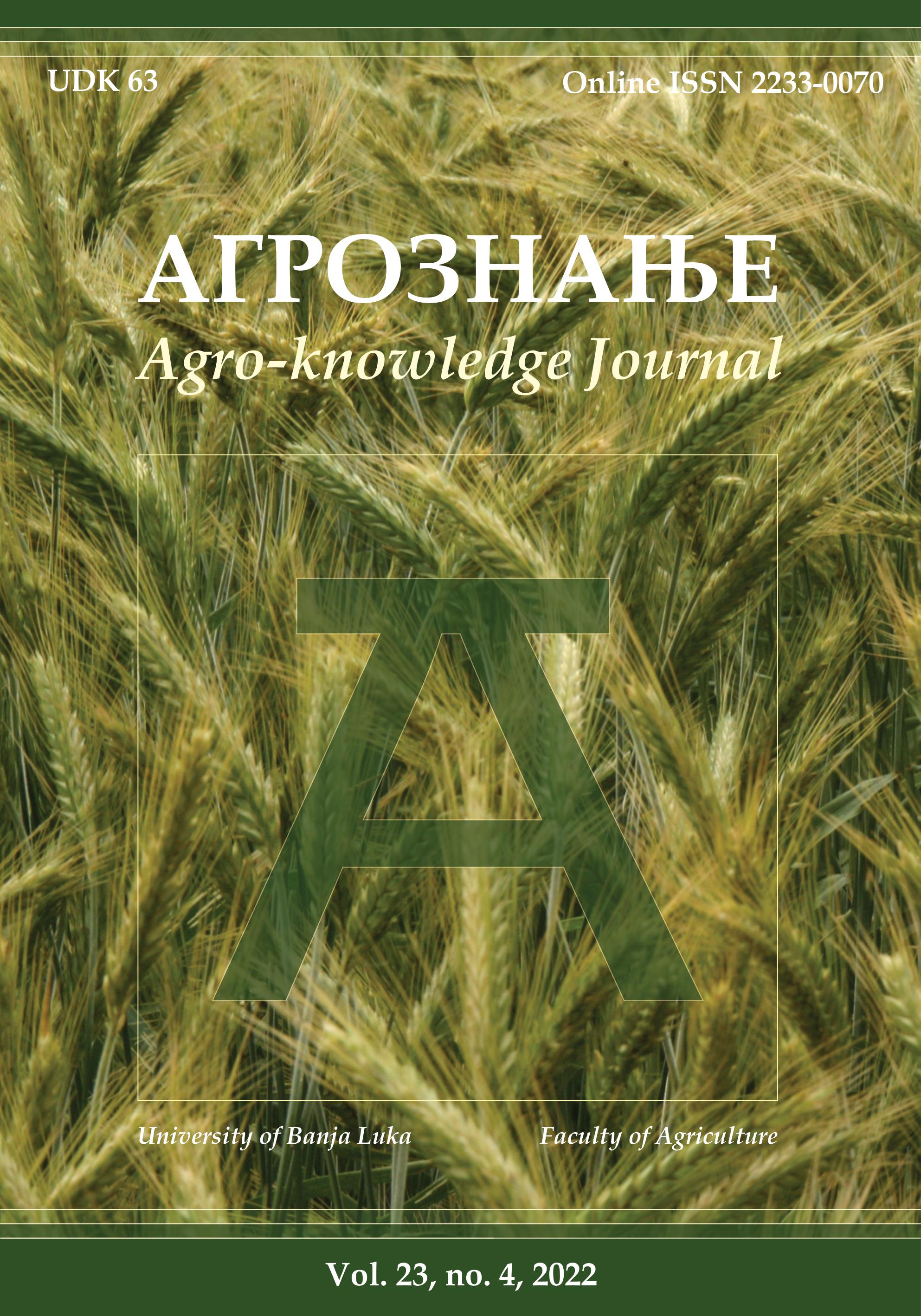Ecological conditions and phenotypic characteristics of Austropotamobius torrentium (Schrank, 1803) in the Subotica and Toplik Rivers
Еколошки услови и фенотипске карактеристике Austropotamobius torrentium (Schrank, 1803) у водотоцима Суботица и Топлик
DOI:
https://doi.org/10.7251/AGREN2204237BAbstract
Austropotamobius torrentium (Schrank, 1803) lives in two watercourses, namely Subotica (Sana) and Toplik (Tilava). The influence of the ecological conditions of these rivers on individuals of this species is analyzed based on 22 morphometric parameters. The assessment of abiotic conditions was done through the measurement of physical and chemical water parameters and the analysis of the composition of phytobenthos and macrozoobenthos. Sampling was carried out in June, September, and October 2021. Water quality at the investigated localities (on the basis of abiotic and biotic parameters) is oligo to betamesosaprobic. A total of 37 crayfish were analyzed (20 from Subotica and 17 from Toplik). Female crayfish have shown significant differences in the head width (HEW) and abdominal thickness (ABH). Males differed significantly in a number of parameters, including the weight (W), head shape (HEL and HEW), rostrum length (ROL), carapace width (CPW), and abdominal shape (ABH and ABL). Higher values of the indicated parameters have been found in the males from the Subotica River. The obtained results are influenced by different ecological conditions of their habitats. The Subotica River is a larger watercourse in the lowland belt with a large number of microhabitats, and the Toplik is a small river in the mountain belt, with uniform sediment and a small number of ecological niches of the analyzed species. The general ecological conditions in the water of both watercourses are also affected by aquaculture facilities, where wastewater has a direct influence on the distribution of Austropotamobius torrentium individuals in the watercourses of the Subotica and Toplik Rivers. For more detailed and complete data, it is necessary to analyze a larger number of individuals in both populations, and to include additional morphometric-meristic parameters and molecular-genetic analyses.
Key words: stone crayfish, water quality, fish farm, morphometric characteristics.

